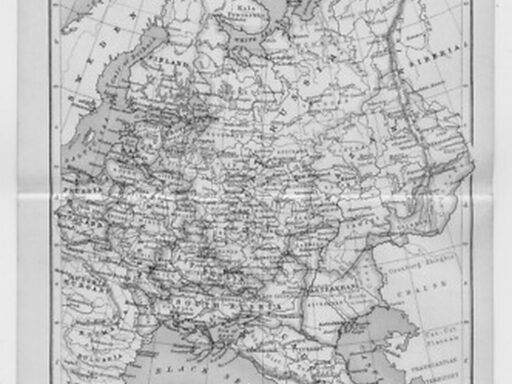Historians regard Yuri Bezmenov’s “Warning to America” as a blend of partial truths and political exaggerations rather than a fully accurate exposure of Soviet subversion tactics. They emphasize a cautious view of his claims due to his background and the broader historical context of KGB active measures.
Bezmenov worked as a reporter for RIA Novosti, an agency where many journalists were covert KGB officers. However, historians agree he was not one of these operatives. His role was limited to reporting observations and information from abroad, which curtailed his access to detailed KGB operational plans. Thus, his detailed descriptions of Soviet strategies are viewed with skepticism. He is seen as a well-meaning journalist rather than an insider.
Bezmenov’s account of ‘active measures’—Soviet political influence operations—contains elements that align with historical records. Active measures included spreading disinformation, forgeries, and anonymous propaganda designed to sow discord. Historians note that these tactics existed and were used, especially during the Cold War, but not as part of a rigid or comprehensive brainwashing plan. Instead, they were flexible tools adapted to achieve limited political effects.
The term active measures connects closely to Ivan Agayants, a KGB officer who helped professionalize these approaches. Under policies like détente and peaceful coexistence, active measures aimed to subtly influence public opinion and political discourse but did not constitute an overarching conspiracy to transform Western societies wholesale. Their impact usually amounted to creating small disruptions rather than massive social shifts.
Historians highlight that active measures often resembled minor provocations or “pranks,” such as circulating controversial letters or articles anonymously. These actions were meant to introduce doubt and distrust incrementally rather than effect immediate or dramatic political change. Internal assessments within the KGB during the 1980s reveal widespread skepticism among officers regarding the effectiveness of these tactics in achieving strategic goals.
During the 1980s, tensions in the Cold War led to intensified active measures, endorsed by KGB directives under Yuri Andropov. Despite this, many intelligence officials doubted the practical impact of these campaigns. The United States experienced a media and public surge of concern over Soviet disinformation, leading to a heightened environment of alarm. Bezmenov’s warnings emerged amid this climate, gaining attention that sometimes outpaced the factual strength of his claims.
Examining official KGB documentation clarifies that active measures were broadly defined as “agent-operational” efforts to influence political affairs in target countries by misleading opponents and weakening adversaries. These descriptions reflect pragmatic political maneuvers rather than sophisticated ideological brainwashing. Their function was opportunistic manipulation of political narratives, not comprehensive social engineering.
Overall, historians interpret Bezmenov’s “Warning to America” as the product of a defector with limited high-level access who supplemented his marginal role with bold, politically charged claims. While not dismissing all of his insights, experts consider his narrative an overlap of partial fact, individual interpretation, and activist messaging lacking strong documentary evidence or corroboration from primary Soviet sources.
They stress a balanced view that recognizes the existence of Soviet influence operations without attributing to them the apocalyptic social transformations Bezmenov feared.
- Bezmenov had limited KGB access; not a direct operative.
- Active measures involved tactical disinformation, not mass brainwashing.
- KGB insiders doubted the large-scale impact of active measures.
- 1980s U.S. media hype amplified defector warnings beyond their factual base.
- KGB officially defined active measures as pragmatic political tricks.
- Bezmenov’s claims combine fact with political activism and exaggeration.
What do Historians make of the claims of Soviet defector Yuri Bezmenov’s “Warning to America”?

So, what’s the historical verdict on Yuri Bezmenov’s much-discussed “Warning to America”? Simply put, historians treat his claims with a generous dose of skepticism. His warnings mix a few kernels of truth with a lot of political flair and exaggeration. Let’s unpack why this is the case.
Bezmenov, a former journalist associated with the Soviet state news agency RIA Novosti, is often portrayed as a whistleblower unveiling the sinister secrets of Soviet subversion. But here’s the catch: historians emphasize he was no deep-cover spy. His role primarily involved reporting and observation, not wielding KGB operational secrets. While RIA Novosti’s ranks included KGB operatives, Bezmenov himself was never confirmed as one.
This means his insights are secondhand rather than privileged intel from the Kremlin war room. Historians point out that KGB agents rarely allowed travelers without clear intelligence duties, so Bezmenov’s knowledge was somewhat limited, more like a journalist on the sidelines than a field agent inside covert planning meetings.
Understanding “Active Measures”: Real Tactics or Soviet Fairy Tales?
One of Bezmenov’s principal claims is about “active measures”—Soviet techniques designed to undermine adversaries through disinformation and subversion. Here, history and Bezmenov’s tale partially align. His definition echoes the real KGB term often linked with Ivan Agayants, a key figure who assembled journalists doubling as intelligence operatives.
Yet, historians caution against accepting Bezmenov’s depiction at face value. Unlike his portrayal of a master plan for mass brainwashing of Americans, the reality is more mundane. “Active measures” were tools in the KGB arsenal—disseminating forged documents, spreading rumors, or planting provocative stories. These actions resembled the Cold War’s version of guerrilla marketing: small, strategic nudges rather than sweeping social engineering.
Far from orchestrating a hidden Marxist takeover, these measures mostly sowed minor distrust and confusion in Western societies. Think of them as persistent drops of doubt, not tsunamis of ideological brainwashing.
How Effective Were These Soviet Strategies, Really?
Despite the drama in Bezmenov’s lectures, historians underline that many KGB officers themselves doubted the grandiose ambitions of active measures. Even during the 1980s—the era of Cold War brinkmanship and increased KGB directives to intensify such efforts—faith in these tactics’ efficacy was limited.
So, while Moscow pushed its agents to work the angles harder, skepticism among the operatives reveals a caution about overestimating the impact. It’s like trying to hype a bad movie with bigger trailers—doesn’t always change the ticket sales.
The American Stage: A Climate Ripe for Soviet Scare Stories

It’s also essential to consider the American context when Bezmenov’s warnings spread. Between roughly 1983 and 1988, U.S. media and intelligence services were buzzing about Soviet disinformation campaigns. The CIA publicly warned citizens about KGB fake news, defectors were making headlines, and paranoia about communist influence was high.
Bezmenov’s interviews hit the scene during this frenzy, helping his message catch fire among an audience hungry for confirmation of Soviet skullduggery. Historians see this as an echo chamber effect—where genuine facts about active measures got bundled with sensationalism, amplifying Bezmenov’s influence beyond what his insider status warranted.
What Do Official Soviet Documents Say?
Looking at the KGB’s own definitions helps ground the discussion. A 1970s KGB handbook describes active measures as:
“Agent-operational measures aimed at exerting useful influence on aspects of the political life of a target country… misleading the adversary, undermining and weakening his positions…”
This sounds poetic but boils down to a pragmatic toolbox focused on trickery—discredit opponents, confuse publics, and reinforce Soviet messaging. It’s politics as usual in Cold War style, not a grand brainwashing script. This matches historians’ assessments of active measures as clever but opportunistic tactics rather than comprehensive ideological warfare.
Why Historians Are Skeptical of Bezmenov’s Alarm Bells
In sum, historians generally regard Yuri Bezmenov’s “Warning to America” as a conscientious but somewhat overzealous defector tale. His marginal position in the Soviet world likely pushed him to compensate with dramatic claims. Historians note a blend of fact and activism in his presentations. They warn against taking his narrative as gospel without corroborating documents.
This is not to dismiss his insights entirely. His background offered a window into Soviet state media and a firsthand perspective on Cold War tensions. Yet, it’s vital to separate the truth from the thriller-like embellishments that made his warnings so popular, especially in the U.S. Cold War milieu.
What Can We Learn from This?
- Verify sources: Defectors like Bezmenov offer valuable perspectives, but their claims need cross-checking against archival evidence and intelligence records.
- Remember the limits of propaganda: Not every rumor or disinformation campaign equates to a successful societal takeover.
- Understand the Cold War context: Fear and political agendas influenced both Soviet operations and Western reception of defectors’ stories.
- Stay critical of extremes: Claims about entire populations being “brainwashed” require more robust evidence than anecdotal reports.
So, is America under Marxist-Leninist brainwashing today as Bezmenov warned? Historians say the answer is more complex. While Soviet intelligence engaged in active measures, these were minor drops of influence, not sweeping ideological conquests.
Instead, the true legacy of Bezmenov’s warnings lies in reminding us to balance vigilance with critical thinking. His story is a fascinating chapter in Cold War history—both as a source and a cautionary tale about how alarmism can sometimes overshadow sober analysis.
And just maybe, it teaches a broader lesson: propaganda and misinformation are not the exclusive tools of one side. In today’s digital age, everyone can become a player in the game of influence—and that’s a reality worth understanding beyond sensational headlines.




